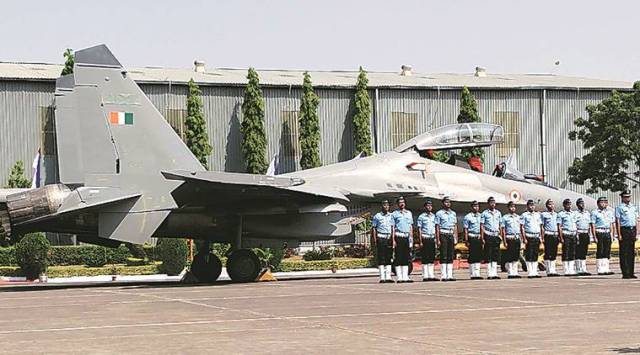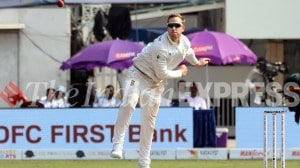IAF revises doctrine, lays out its role in a ‘no war, no peace’ setting
In a note in the revised doctrine, Air Chief Marshal VR Chaudhari said that network-centric warfare is now fundamental to IAF’s power projection, with offensive and defensive operations being conducted through an Integrated Air Command and Control System.
 The IAF first published a doctrine in 1995, which was revised in 2007. In 2012, a revised and unclassified basic doctrine was published. The latest doctrine revises the 2012 document.
The IAF first published a doctrine in 1995, which was revised in 2007. In 2012, a revised and unclassified basic doctrine was published. The latest doctrine revises the 2012 document.
The Indian Air Force (IAF) Saturday made public a revised doctrine in which it laid out the role of air power in the “no war, no peace scenario” that India typically faces. The doctrine highlighted the use of air power as part of a joint military strategy involving the two other forces.
The doctrine — which refers to air power as aerospace power — also emphasised that defensive and offensive counter-operations are “inextricably linked”.
In a note in the revised doctrine, Air Chief Marshal VR Chaudhari said that network-centric warfare is now fundamental to IAF’s power projection, with offensive and defensive operations being conducted through an Integrated Air Command and Control System.
About bringing in jointness in the Indian military, the IAF doctrine stated that aerospace power offers wide options towards a comprehensive military strategy.
The doctrine, in a first, extensively detailed the “no war, no peace” (NWNP) environment, saying the condition requires the IAF to work towards shaping the behaviour of external threats.
It said IAF effectively demonstrated rapid air mobility and deterrence through posturing during the Eastern Ladakh standoff with China.
It also cited the example of the 1971 Indo-Pakistan war where the IAF’s counter operations against Pakistan air assets gave it freedom for offensive operations.
“The IAF was instrumental in enabling surface forces to prosecute their operations unhindered by enemy air. On the Western front, favourable air situation established by the lAF allowed offensive air operations against enemy’s armoured thrusts and provided close air support to the Indian Army in its land operations,” it said.
The doctrine also spoke about shaping operations through air diplomacy, air force-to-air force engagements for training and cooperation, and demonstration of aerospace power capabilities in the NWNP environment.
It talks about a shift from ‘threat based and demanded’ to ‘capability demanded’ force requirements, development of R&D capabilities through private-public partnership in niche technologies and establishment of robust joint structures.
The doctrine comes amid the ongoing military discourse of Russia being unable to use its air power effectively in the war against Ukraine.
Air Marshal Diptendu Choudhury (retd) who was part of the doctrine team, told The Indian Express that Russia’s ineffective use of offensive air power against Ukraine—which included a poorly executed SEAD and Counter Air campaign, was among key aspects which led to the failure of its military strategy and prolonged the war.
“Despite Russia’s tactical frontline aviation being under the direct control of the Operational Strategic Command (OSK)- West, it has failed to coordinate and leverage air power towards its surface campaign objectives,” he said.
About the doctrine, he said that air power’s role in offensive operations was as important as assisting the other services.
The IAF first published a doctrine in 1995, which was revised in 2007. In 2012, a revised and unclassified basic doctrine was published. The latest doctrine revises the 2012 document.
Senior officers of the force said that rapid changes in global air power necessitates a review of the doctrine from time to time.







